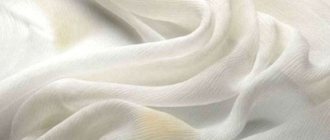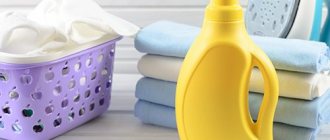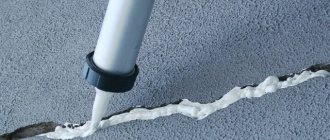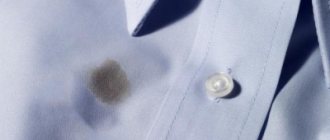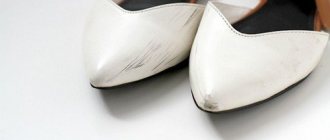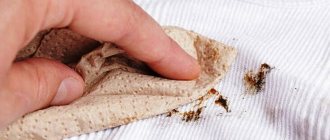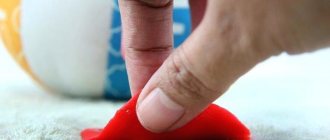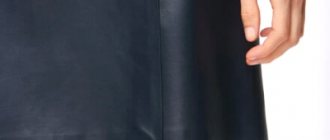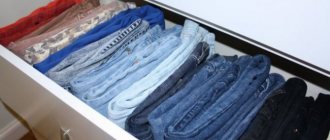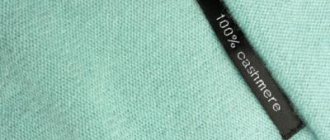A plastic jelly-like mass with unique physical properties is capable of stretching, flowing, becoming dense and even bouncing off hard surfaces.
When it gets on the fabric, the mucus spreads, penetrates deeply into the structure of the fibers and gradually dries out. This causes a lot of trouble for mothers. Removing traces of children's play from textiles at home is a difficult task.
We'll tell you in this article how to remove slime from fabric - blankets, rugs, jeans and other things.
How to remove using mechanical methods?
If a large piece of slime has stuck to the fabric, it is not recommended to wash the item immediately. The sticky mass does not dissolve in water and will remain on the surface. It is necessary to clean it off as quickly as possible.
Suitable for this:
- brush;
- wooden spatula;
- plastic spatula;
- butt (blunt side) of the knife;
- a plastic card;
- tool for working with plasticine.
Sharp objects (knife blade, scissors) will cut through the sticky mass faster, but the risk of damaging the material will increase significantly.
Some housewives use tape or pieces of slime. It is enough to stick the product to the contaminated area, sharply tear it off and repeat until all the substance has left the tissue.
Even dried slime can be removed mechanically. The method is fundamentally not suitable for delicate fabrics; for them it is better to use freezing.
When are dry cleaning services required?
Unfortunately, old slime stains (which are more than a week old) cannot be completely removed at home. The adhesive particles have already penetrated deep into the fabric. You will have to take the product to the dry cleaner, especially if we are talking about a carpet or rug.
Also, do not take risks trying to remove slime from expensive wardrobe items or particularly delicate fabrics (silk, chiffon, viscose). It is better to entrust the rescue of such things to professionals.
Thermal impact
Like chewing gum and plasticine, slime is sensitive to temperature changes. These properties will help get rid of sticky mass from almost any fabric.
Before using the method, you must try to remove the maximum amount of substance from the surface mechanically.
Heat
Denim, cotton and linen products tolerate high temperatures well. You can remove the remaining slime on them using boiling water, then the sticky mass will become liquid.
Step-by-step instruction:
- Clean off any remaining slime mechanically.
- Pour boiling water into a container (basin, bowl).
- Soak the item and wait until the water cools to room temperature.
- Machine wash with stain remover added.
You can enhance the cleaning efficiency with ammonia. It is enough to add 1 tsp to the soaking container. The method has a significant drawback - large items (furniture, heavy curtains) cannot be cleaned this way.
It is imperative to study the manufacturer's recommendations for caring for the product on the label. Fabrics with natural composition may shrink after contact with boiling water.
Freezing
The method is universal, it can be used even for natural wool, viscose, silk and knitwear. The slime hardens under low temperatures and is easily separated from the fibers. Delicate fabrics will not lose their appearance and will not become deformed.
Algorithm of actions:
- Place the product in a plastic bag.
- Place in the freezer.
- Leave for 3-4 hours until the substance hardens.
- Clean off pieces of slime mechanically.
If the product is large (sofa, carpet), you can use ice cubes. It is enough to place them in a bag and apply them to the affected area.
How to remove contamination with folk remedies?
After removing the main part of the slime from the textile surface, a colored and greasy mark remains. Components that can be found in every housewife’s arsenal will help you get rid of them.
Not all products are equally effective; for example, vegetable oil does a good job of removing slime residue, but leaves behind a characteristic stain that is not so easy to remove.
Laundry soap
If slime has recently gotten on the fabric, a universal budget product will help get rid of it - laundry soap containing 72% fatty acids. It copes with almost any type of pollution.
Instructions for use:
- grind the product using a grater or knife;
- add water to the shavings until a paste forms;
- treat the stain with the product and leave for half an hour;
- remove the product with a damp cloth;
- Rinse the treated area thoroughly with clean water.
Soap shavings should be diluted with boiling water; the product should be applied to the fabric surface after it has cooled. The procedure must be repeated until the problem disappears completely. If you don't have the product you need at home, you can replace it with a few drops of dishwashing liquid.
Organic solvent
To fix the problem, use gasoline, purified kerosene, or acetone-based nail polish remover.
Instructions for use:
- Place the product on a flat surface.
- Place napkins under the contaminated area.
- Apply the product to a tampon, rag or napkin (preferably white).
- Treat the stain, moving from the edge to the center.
- Wash the product using conditioner.
It is better to work with aggressive liquids with gloves, and protect your respiratory tract with a mask or respirator. Drying must be done in fresh air to get rid of the specific odor.
Medical alcohol
Housewives use the product in pure form or in solution, it depends on the type of fabric. Mode of application:
- place the item on a hard surface;
- place napkins under the area that requires treatment;
- moisten a rag with alcohol and apply to the stain;
- rinse the surface with clean water after 15-20 minutes;
- wash the product in the usual way.
The product effectively removes fresh and old stains, but is not suitable for delicate fabrics (especially silk). Medical alcohol can be replaced with isopropyl alcohol, the quality of cleaning will not be affected.
conclusions
Thus, a fresh stain from slime can be easily removed using chemical and folk remedies. This will take no more than 2 hours, including the final wash. Choose a method depending on the type of fabric. Please note that household chemicals, although more expensive, cope with dirt better and are suitable for many materials.
Source of the article: https://mschistota.ru/sovety/otstirat-lizuna-s-odezhdy.html
How to remove slime from a blanket: methods and tips, How to wash slime from a blanket.
Professional compositions
Residual slime stains from textile surfaces can be removed with industrial products that are used to remove chewing gum and paints and varnishes. Housewives recommend:
Dr. Beckmann Office and hobby
Universal stain remover . Effectively fights residues of chewing gum, glue and paint. Does not contain phosphates and chlorine. The release form is bottles with liquid, there are bottles with a convenient roller. Price from 170 rubles for 50 ml. Read reviews here.
Vanish Oxi Action
Surfactant-based concentrate for removing stains. The product is used for pre-treatment of dirt, soaking and main washing. Does not contain chlorine, safe for delicate fabrics. Price 340 rubles per 1 liter. Read reviews here, here and here.
WD-40 or RW-40
Universal spray lubricant from automotive stores . Contains mineral oil and white spirit. Removes sticky mass from the surface without difficulty, but leaves a characteristic greasy residue that must be removed. Price from 320 rubles for 450 ml.
When choosing an industrial product, you must carefully study the instructions on the packaging so as not to spoil the fabric fibers.
How to clean slime from carpet and upholstery?
While playing, a child often stains the carpet, sofa or bedspread with slime. These stains can be removed in several ways:
- You can remove fresh marks from a carpet or carpet using the toy itself: since the mass is sticky, the particles will stick to each other, and most of the stain will be collected. Sticky dried marks can be carefully scraped off with a sharp object.
- Another option is to use a special cleaner for carpets and rugs (for example, Vanish).
- Slime stains can be removed with a cotton swab soaked in hydrogen peroxide, acetone or alcohol.
- Another option is to use dish soap. Just as with clothes, you need to pour a small amount of liquid onto the mark and, after waiting about 10 minutes, rinse it off with water.
After removing the stain, it is recommended to steam and vacuum the area of the carpet.
If the contamination is severe or old and it is not possible to clean it with improvised means, then you can call in professionals. Today, cleaning companies provide home-based services, and the visiting specialist will select the most effective method for removing the stain.
Cleaning clothes
If the sticky mass gets on a piece of clothing, you can use one of the methods suggested above.
The algorithm of actions will always be the same:
- Remove particles of sticky mass that did not have time to penetrate the fabric using mechanical means.
- Get rid of remaining slime using the chosen method (freezing, soaking in boiling water, soap solution, active substances, stain removers).
- Wash the product and dry it.
It is necessary to choose a stain remover taking into account the type of fabric, the size of the product and the manufacturer’s recommendations on the label.
This video will show you how to remove slime from clothes:
Chemical cleaning
We will tell you below how to remove slime from clothes using special chemicals. The industry produces a number of suitable products. For example, stain removers from Dr. Beckmann and Vanish. Both are designed to remove glue stains, dried gum, paint, varnish and other stubborn stains. Considering the composition of slimes, preparations from these brands are ideal for removing stains from jelly-like toys. The substance is applied locally for 5-10 minutes, then the area can be washed with water.
It is no coincidence that RW-40 (universal lubricant of the RUNWAY brand) is called a “liquid wrench”. The product is intended for cars - it removes moisture and cleans parts from dirt. However, it is also used to remove slime from clothes. It can be difficult to simply pick up and tear off a toy. But if you moisten it with this product, then rub it lightly, it will be easy to remove.
Acetone is used in the same way. It is effective for use on fur or fleecy surfaces. However, it is better to take an expensive fur coat or hat to the dry cleaner so that the original appearance of the item can be restored by professionals.
Features of cleaning various textiles
The choice of cleaning method directly depends on the composition of the fibers of the material affected by the sticky mass. Freezing is suitable for any textile products, but there are recipes that are used only for certain groups.
Jeans, cotton, linen
Natural fibers of plant origin are resistant to aggressive components. Can be soaked in boiling water, processed:
- laundry soap;
- medical and ammonia alcohol;
- solvents;
- table and apple cider vinegar;
- kerosene, gasoline;
- industrial products (stain removers, refrigerants).
Organic solvents must be used carefully so as not to discolor the fabric.
Silk, wool, guipure
To clean delicate fabrics from slime, the following are most often used:
- freezing method;
- solutions based on laundry soap or dishwashing detergent;
- industrial stain removers.
Professionals do not recommend using acidic solutions containing lemon juice, vinegar and alcohol (ammonia is especially dangerous). Treatment with hydrogen peroxide is fundamentally unsuitable for silk.
Items made of knitwear, viscose, synthetics
The best way to get rid of sticky mass on such fabrics is to use household chemicals. You should choose a stain remover taking into account the composition and color of the material . The safest folk remedies are freezing and subsequent treatment with soapy water.
The mechanical method of pre-cleaning is absolutely not suitable for knitted fabrics; they are more susceptible to deformation.
Rustle or carpet
Slime that gets onto the carpet can be easily removed by mechanical scraping after drying or freezing with ice. Industrial carpet cleaning products work well to remove residual stains.
Step-by-step instruction:
- add the liquid to the water and foam well;
- Apply a generous layer of foam to the stain and rub with a sponge;
- blot the area with a napkin to remove excess moisture;
- remove residues with a vacuum cleaner.
Suitable folk remedies:
- soapy,
- acetic,
- alcohol solution,
- organic solvent.
The method of application is identical. The solvent is not recommended for use on synthetic surfaces.
This video will show you how to clean slime from a carpet:
Plaid
It is more difficult to remove non-Newtonian fluid from a fleecy surface. The mechanical method is not suitable, as there is a risk of damaging the fibers and ruining the product. Exposure to low or high temperatures is also difficult.
In this case, it is necessary to choose an effective industrial or folk remedy and use it according to the instructions:
- If possible, remove large particles of slime.
- Moisten the stain with a small amount of water.
- Apply the cleaner to a rag and treat the textile surface.
- Rinse the area with clean water.
- Dry the product.
Treatment of stains is always carried out from the edge to the center so that the size of the stain does not increase. In order not to spoil the blanket, the product must first be tested on an inconspicuous area.
From furniture upholstery
It is more difficult to clean armchairs, sofas, and mattresses from the jelly-like mass due to their large size. In addition, contact with large amounts of moisture is contraindicated for products. The best way is to use professional dry cleaning services.
If the housewife decides to carry out the procedure on her own, it is necessary to act locally, be careful and observe the following points:
- Remove pieces of slime mechanically.
- Treat the surface with one of the products described above (stain remover, homemade solution).
- Rinse the area with clean water.
- Let the fabric dry.
When cleaning the sofa, you should remember that you cannot pour detergent or clean water onto the surface. The liquid must be applied to a rag or napkin and treated with it.
From outerwear
Jackets and coats are cleaned using methods that are used for clothing, but the large size does not allow the product to be placed in the freezer.
Things can be placed on the balcony at sub-zero temperatures or use ice cubes in a plastic bag. After 2-3 hours, you can use the mechanical cleaning method and remove the residual stain using any of the suggested means.
A solvent will help remove the sticky mass from fur lint. It is necessary to apply the product to the sponge and treat the damaged area.
Vinegar will dissolve the substance
Grab a bottle of vinegar and get ready to use your arm muscles! There is no magic formula for this other than pour it out and wash it out. You can see that we have a pretty black shirt and the color has not been damaged!
Note: We keep a lot of baking soda and vinegar on hand for our science experiments! This is also a classic kitchen or pantry option, but if you don't have a ready-made product, check out our second slime removal method below.
You can go ahead and pour vinegar on the slime stained area! I highly recommend doing this over a sink, outside, or even in a container so you don't add more clutter to the situation!
Recommendations from professionals
To remove non-Newtonian fluid from fabric, you must follow simple rules:
- Prepare the room in which the procedure will be carried out. Open the windows, turn on the ventilation. Constant air circulation is especially important when working with volatile substances and acids.
- Take care, if necessary, to protect the skin of the hands, upper respiratory tract and mucous membranes. A mask or respirator, rubber gloves will allow you to get rid of specific contamination without harming your health.
- Assess the size of the soiled item and prepare a container that matches its size (bowl, basin, bathtub). If you only have to clean a small part of the surface, you should not soak it all.
- Select a cleaning agent based on the type of material. Delicate fabrics do not tolerate contact with aggressive components and prolonged mechanical impact.
- Read the instructions on the detergent label and treat the surface in accordance with the manufacturer's recommendations.
- Avoid prolonged rubbing and brushing of delicate fabrics (silk, organza, natural wool). Wash with gentle movements, without pressure.
- Rinse the product several times after cleaning. Most active ingredients are poorly washed out of the fibers and can further cause skin irritation.
If an expensive item made of thin, delicate fabric has been damaged, it is advisable to turn to professionals. Dry cleaning services are not free, but they will help preserve the product.
